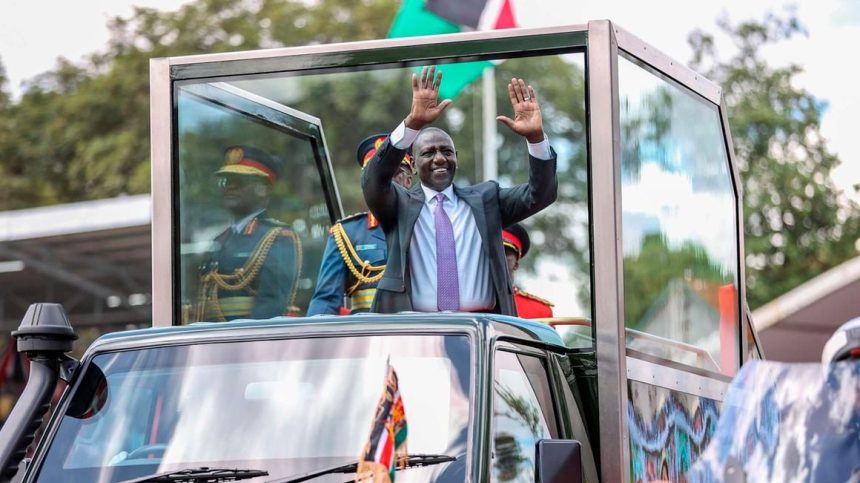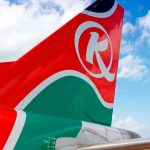President William Ruto’s administration will lease the operations and management of five critical ports through an ambitious Sh1.4 trillion public private partnership (PPP) aimed at revitalising the country’s maritime industry.
In what appears to be a change of heart on a proposal by the previous administration to hand ports to private investors, the Kenya Development Corporation (KDC), a development finance institution, has disclosed the Kenya Kwanza administration is scouting for private players to run sections of Kilindini Harbour, Dongo Kundu Port, Lamu Port, Kisumu Port and Shimoni Fisheries Port in what is aimed at making the northern corridor competitive.
“The ports are confronted with the challenge of congestion and, therefore, higher dwell times for cargo. The ports will be leased/concessioned to private operators with landlord-type port management system,” states the KDC in its pitch to potential investors.
Kenya’s trade route has recently come under intense competition with the landlocked countries of Uganda, Burundi and Rwanda preferring to use the Tanzanian route.
Both countries have sought to revamp their ports, or build new ones (Lamu Port in the case of Kenya and Bagamoyo in Tanzania), as they fight woo the landlocked countries by promising faster evacuation of cargo.

The northern corridor— a multimodal trade route linking the landlocked countries of the Great Lakes Region with the Kenyan maritime sea port of Mombasa—has been competing for cargo with Tanzania’s central corridor.
The Central Corridor is a transport and trading route that links Burundi, Uganda, Rwanda and DR Congo to Tanzania’s maritime.
Official data shows that the volume of cargo handled by Mombasa port dipped for the first time in five years with players pointing to rising competition from Dar es Salaam.
Total cargo passing through the port dropped to 33.74 million metric tonnes last year from 34.76 million tonnes the year before, data collated by the national statistician shows.
Part of the two countries’ plan to improve their respective trade routes has been to build Standard Gauge Railway (SGR), a modern railway that is faster and can carry more goods.
At the height of the election campaigns last year, Ruto-led Kenya Kwanza Alliance opposed a similar plan that had been mooted by the previous administration of Uhuru Kenyatta, claiming the selected infrastructural assets had been secretly sold to Dubai Port World FZE.
The alliance alleged that Mr Kenyatta illegally sold the ports of Mombasa, Lamu and Kisumu but the previous government noted that it had not entered into any agreement for the leasing of the assets.
But with the port of Mombasa coming under intense competition owing to its weak capacity, the Ruto government is turning to the private investors for a revamp.
The Kenya Ports Authority (KPA) and the Lapsset Corridor Development Authority have been designated as the implementing agencies of the planned leasing.
The State projects to raise Sh1.4 trillion ($10 billion) through the PPP exercise.
Further, the government is seeking up to Sh42.1 billion ($304 million) worth of private investment into the Port of Lamu, with a big chunk of the money being used to develop the port’s agribulk and liquibulk terminals.
Nearly three quarters is to be deployed upfront, with the government’s selling point to the investors being what it reckons is an anticipated strong growth in both imports and exports.
Investment in the Agribulk Terminal is earmarked to take up the lion’s share of the planned capital injection at Sh29.1 billion ($210 million) with 78.0 percent of this amount expected to be made upfront.
Read: KPA moves cargo services to e-Citizen portal
“Agribulk import demand at the port of Lamu is projected to increase from 547,000 tonnes in 2023 to 3.3 million tonnes in 2045. The investment will enable facilitation of import and export to meet demand of grain requirements, creation of job opportunities,” KDC states in its pitch.
Investment in the Liquidbulk Terminal is earmarked to take up Sh13 billion ($94.0 million) with 65 percent of the amount expected as upfront investment.
Storage tanks at the port of Lamu are expected to be the highest cost component gobbling up Sh4.2 billion ($30.0 million).
“Demand for refined oil product imports and crude oil exports in Kenya is expected to increase from 6.8 million tonnes in 2020 to 19.3 million tonnes in 2045. Refined oil imports captured by Lamu port are expected to increase from 395,000 tonnes in 2023 to 2.6 million tonnes in 2045. Crude oil exports through the port of Lamu are expected to increase to 3.0 million tonnes,” KDC adds.
In April, all the agencies handling cargo at the port of Mombasa were directed to clear them within 24 hours, as part of measures by a multiagency team.



